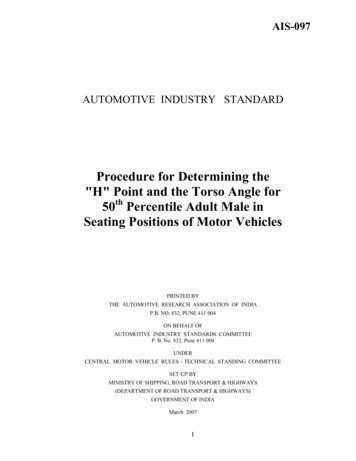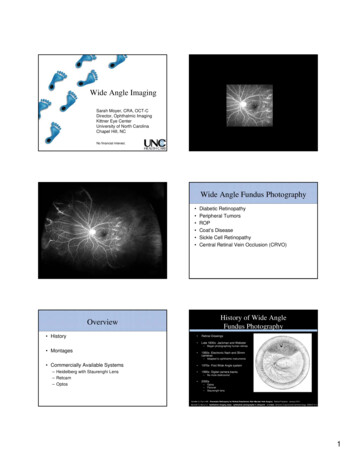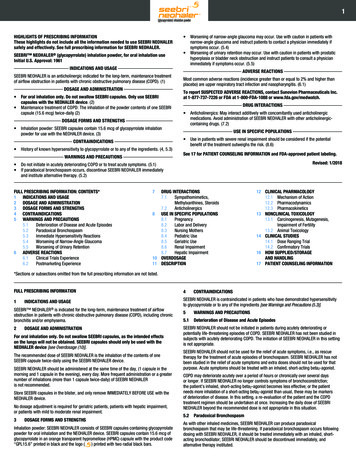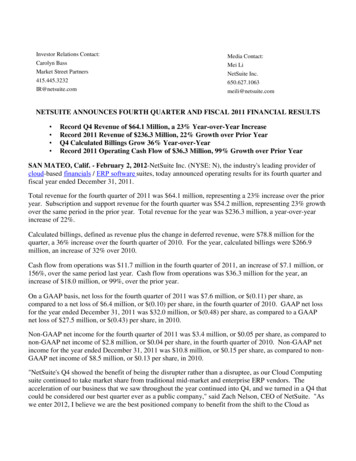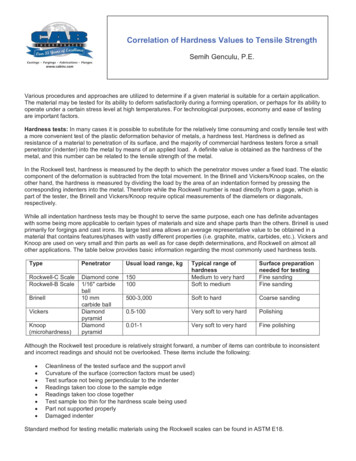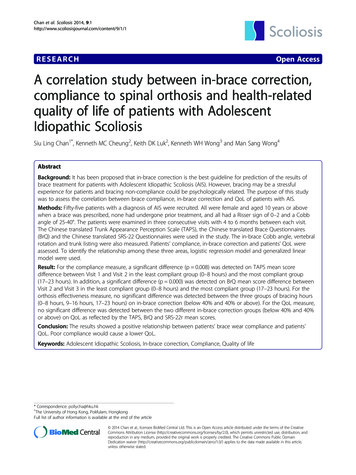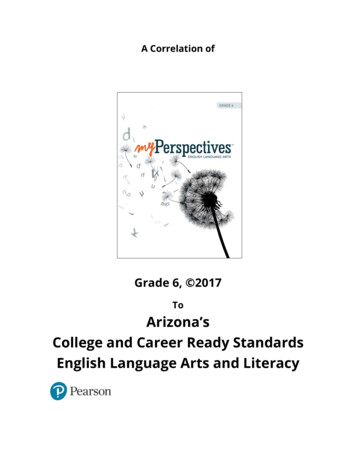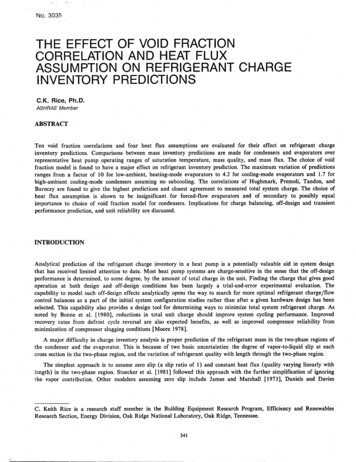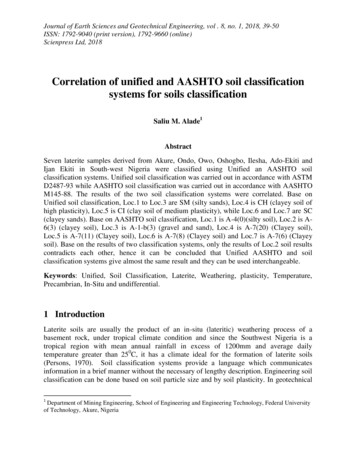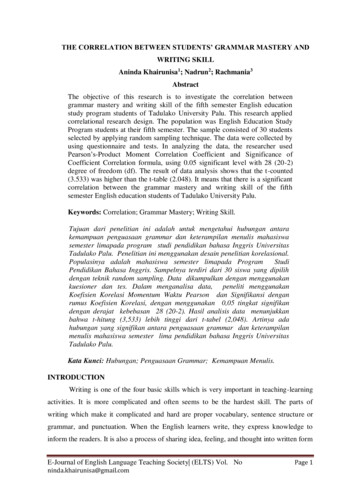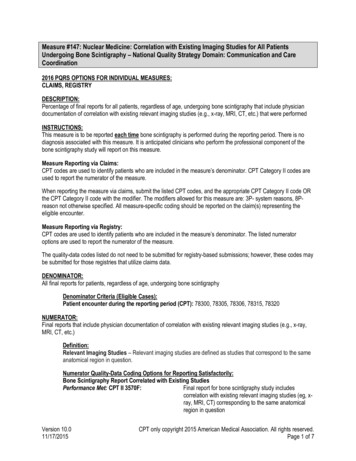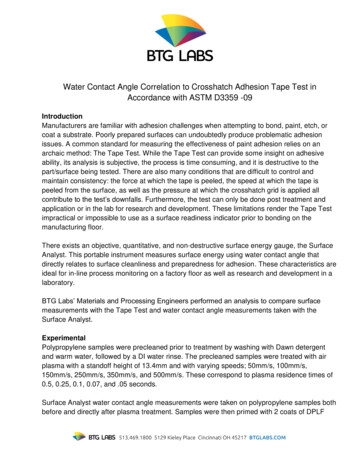
Transcription
Water Contact Angle Correlation to Crosshatch Adhesion Tape Test inAccordance with ASTM D3359 -09IntroductionManufacturers are familiar with adhesion challenges when attempting to bond, paint, etch, orcoat a substrate. Poorly prepared surfaces can undoubtedly produce problematic adhesionissues. A common standard for measuring the effectiveness of paint adhesion relies on anarchaic method: The Tape Test. While the Tape Test can provide some insight on adhesiveability, its analysis is subjective, the process is time consuming, and it is destructive to thepart/surface being tested. There are also many conditions that are difficult to control andmaintain consistency: the force at which the tape is peeled, the speed at which the tape ispeeled from the surface, as well as the pressure at which the crosshatch grid is applied allcontribute to the test’s downfalls. Furthermore, the test can only be done post treatment andapplication or in the lab for research and development. These limitations render the Tape Testimpractical or impossible to use as a surface readiness indicator prior to bonding on themanufacturing floor.There exists an objective, quantitative, and non-destructive surface energy gauge, the SurfaceAnalyst. This portable instrument measures surface energy using water contact angle thatdirectly relates to surface cleanliness and preparedness for adhesion. These characteristics areideal for in-line process monitoring on a factory floor as well as research and development in alaboratory.BTG Labs’ Materials and Processing Engineers performed an analysis to compare surfacemeasurements with the Tape Test and water contact angle measurements taken with theSurface Analyst.ExperimentalPolypropylene samples were precleaned prior to treatment by washing with Dawn detergentand warm water, followed by a DI water rinse. The precleaned samples were treated with airplasma with a standoff height of 13.4mm and with varying speeds; 50mm/s, 100mm/s,150mm/s, 250mm/s, 350mm/s, and 500mm/s. These correspond to plasma residence times of0.5, 0.25, 0.1, 0.07, and .05 seconds.Surface Analyst water contact angle measurements were taken on polypropylene samples bothbefore and directly after plasma treatment. Samples were then primed with 2 coats of DPLF
Epoxy Primer. Primer was applied according to technical data sheet with adequate timesallowed for drying between coats, in accordance with industry standards. Black EnvirobaseHigh Performance (EHP) waterborne basecoat automotive paint was then applied to thesamples within 30 minutes of primer coats and allowed to dry for 24 hours prior to testing.Adhesion testing was done in accordance with ASTM standard D3359-09, Standard TestMethod for Measuring Adhesion by Tape Test (see Figure 1). This included using a crosshatchtool to scratch a grid into the surface. A piece of adhesive tape was then placed over the gridand pressed firmly into place. The tape was then removed at a medium pressure at 180degrees. The percentage of paint pulled off with the adhesive in relation to the grid wasexamined.Figure 1.ATSM D3359 Classification of Adhesion Test Results
ResultsFigure 2 shows the water contact angle measurements obtained from each part as a function ofplasma residence time. Increasing the plasma residence time decreased the measured contactangle, indicating increased surface energy. Figure 3 shows the images of the cross-hatch tapetest and the correlation between adhesion and plasma residence time as measured by ASTMD3359. Figure 4 demonstrates the results from the water break images and their correlation towater contact angle measurements. Although the nature of the ASTM classifications makeprecise correlation with treatment level subjective for intermediate adhesion levels, this testshows that contact angles below about 40 are associated with significantly improved adhesion,and that contact angles of approximately 20 are associated with no observable paintdelamination.Figure 2.Water contact angle measurements as they correspond to plasma treatment onpolypropylene surfaces.
Figure 3. Cross hatch images ordered according to ASTM classificationGreater than 65% adhesion failure, classification 0B (ASTM).Control (no plasmaexposure)15-30% adhesion failure, classification 2B (ASTM)0.05 s plasma exposure5-15% adhesion failure, classification 3B (ASTM)0.07 s plasma exposureLess than 5% adhesion failure, classification 4B (ASTM)0.1 s plasma exposureLess than 5% adhesion failure, classification 4B (ASTM)0.25 s plasma exposure0% adhesion failure, classification 5B (ASTM)0.5 s plasma exposure
Figure 4.Contact Angle vs. ASTM Classification. Classifications; 5B – 0% adhesion failure, 4B 5% adhesion failure, 3B – 5-15% adhesion failure, 2B – 15-35% adhesion failure, 1B –35-65% adhesion failure, 0B - 65% adhesion failureConclusionsThese data show that water contact angles measured using the Surface Analyst correlate verywell with plasma exposure time. Because of the dependence of water contact angles on thesame surface characteristics that determine adhesion, these contact angles are an excellentpredictor of paint adhesion. The rapid, quantitative, and non-destructive nature of the contactangle measurements when compared to the ASTM D3359 Tape Peel Test make contact anglemeasurements a more practical, economical, and accurate quality assurance test for evaluatingtreatment level and treatment consistency. With this paint/substrate/surface treatment system,contact angles with an average of 15 corresponded with 0% adhesion failure. Contact angleswith an average of 35 correspond with less than 5% adhesion failure. Contact angles with anaverage of 40 correspond with a 5-30% adhesion failure. Contact angles greater than 50 correspond with total adhesion failure. The Tape Test does offer some insight on adhesiveability, however the measurements are subjective and not highly precise as they rely on theuser’s interpretation. Lastly, the test cannot be used in a factory setting to monitor surfacepreparation prior to adhesion. Water contact angle measurements offer more precise insightinto adhesive ability prior to bonding, painting, etching, or coating—directly on themanufacturing floor.
Accordance with ASTM D3359 -09 Introduction Manufacturers are familiar with adhesion challenges when attempting to bond, paint, etch, or coat a substrate. Poorly prepared surfaces can undoubtedly produce problematic adhesion issues. A common standard for measuring the effectiveness of paint adhesion relies on an archaic method: The Tape Test. While the Tape Test can provide some insight
